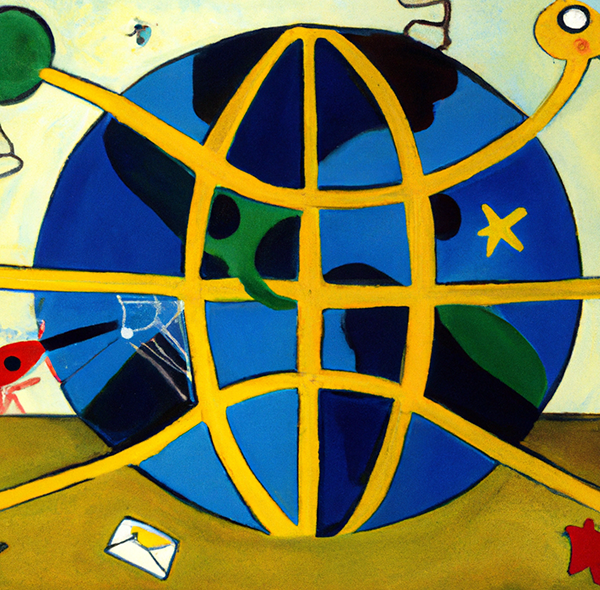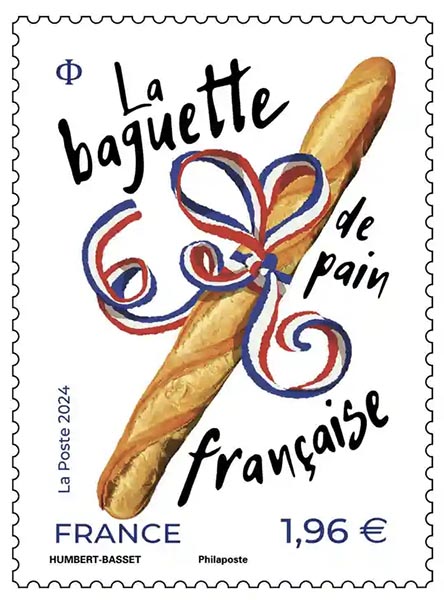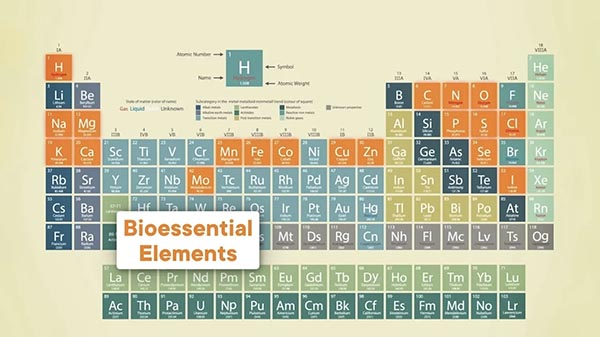
Signs of the Times, Part the Ongoing: Exterminate Apostrophes!
The computers are coming for our punctuation, at least in England. Via the BBC, the North Yorkshire Council is removing apostrophes from street signs as, it claims, they can cause trouble with geographical databases.
The council said all new street signs would be produced without one, regardless of previous use. Residents spoken to by the BBC urged the authority to retain apostrophes or risk “everything going downhill”.
The problem is:
“All punctuation will be considered but avoided where possible because street names and addresses, when stored in databases, must meet the standards set out in BS7666.
BS indeed.
“This restricts the use of punctuation marks and special characters (e.g. apostrophes, hyphens and ampersands) to avoid potential problems when searching the databases as these characters have specific meanings in computer systems.”
Great—so AI is supposedly going to take over all our lives but a geographic computer can’t figure out what an apostrophe is on a street sign? Harrumph!
However, it being Britain, people have started drawing them in anyway.

[A former teacher] said that she spent time teaching children the basics of grammar only for it now to be abandoned on street signs.
Thats right!
Oh, the Pain
They say bread is the staff of life, and if you have ever spent any time in France, you know they love them their baguettes. In fact, there have been laws on the books in France since the French Revolution guaranteeing a constant and consistent supply of fresh bread. Now, to celebrate the baguette, the French Post Office has released a postage stamp.

And, if that were not enough, it is a scratch-and-sniff stamp. Says Le Guardian:
The stamp, which costs €1.96, depicts a baguette decorated with a red, white and blue ribbon. It has a print run of 594,000 copies.
According to the Parisian shop Le Carre d’encre, which sells it, the stamp has a “bakery scent”. The ink used on the stamps contains microcapsules which provide the fragrance.
It was released for sale on Friday, after a launch on Thursday, the day of Saint-Honoré, the patron saint of bakers and pastry chefs.
It is not without its production problems. Says Damien Lavaud, printer at Philaposte, told France Bleu:
“And the difficulty for us is to apply this ink without breaking the capsules, so that the smell can then be released by the customer rubbing on the stamp.”
This, however, is a bit over the top:
The French baguette was given Unesco heritage status in 2022.
Labeled with Love
If you have broadband Internet service and have ever tried to figure out what your plan actually consists of or, if searching for a new plan, what you’ll actually pay, you know that it is easier to learn Klingon. However, that may change as, via CNN, broadband plans will be required to have standardized “nutrition labels” that spell out exactly what you’re getting and for how much.
“The FCC borrowed the nutrition label model format from food products because we wanted to make basic information about broadband internet service easily recognizable and easy to understand,” Alejandro Roark, the FCC’s bureau chief for consumer and government affairs, told reporters on a conference call.
Known as “consumer broadband labels,” the FCC-mandated disclosures must be offered at the point of sale both online and in stores — and in many cases, in both English and Spanish.
They will have to include information about early termination fees, data caps and network practices such as speed throttling. And they will have to be easily accessible: Providers won’t be allowed to bury the labels in fine print or on separate web pages, and consumers will need to be able to refer to them conveniently anytime they pay their bills or want to compare plans, Roark said.

Let Us Spray
Via Boing Boing, Andrea Love has created a cute stop-motion animation in which little felt spray cans appear to spray wool “paint.
Graphene Masks Up
Was it a good week for graphene news? It’s always a good week for graphene news! Researchers develop graphene oxide spray coating for antiviral face mask protection. From (who else?) Graphene-Info:
The team’s system is based on nanoplatelets of graphene oxide (GO) spray coated via a simple one-step procedure over a poly(lactic acid) textile fabric, allowing a homogeneous coating. The incorporation of GO does not affect the textile structure nor its air permeability, while it increases its water contact angle, potentially preventing droplet trespassing.
The antiviral efficiency was tested against Influenza A virus (strain A/Hong Kong/8/68), reportedly reaching a high reduction with no cytotoxic effect observed.
Elementary Biology
The Periodic Table—no, it’s not another name for an occasional table (and what is an occasional table when it’s not a table?)—we all remember it from chemistry class. (Some of us even had it on a T shirt…) We know many of the elements (and some have even sung them) but how many of them are essential to human life? Via Laughing Squid, Niba of SciShow explains how many Periodic Table elements actually exist in the human body.
About 99.9% of your typical human body is made of just 11 elements from the periodic table. But hiding in that remaining 0.1% are some elements that do some very important jobs to keep you alive and healthy.

You’ll want to make sure you’re getting your daily dose of molybdenum.
Knocked Up
Here’s a question that may have kept you up at night: how did people wake up for work before alarm clocks existed? Well, via Boing Boing, you could hire a “knocker-upper.”
A knocker-upper would come to the outside of your house in the morning and wake you up by banging on your window with a long stick. Sometimes, they would shoot peas at your window to wake you.
Some knocker-uppers would kindly wait outside the sleepers window until receiving confirmation that the person had woken up. Others would simply knock a few times and move on.

The topic was also covered in QI’s K series:
One famous Limehouse knocker-upper called Mary Smith woke people up with a pea shooter, firing at the windows.
- XL Tangent: Dorset knocker-upper Caroline Jane Cousins, also called Granny Cousins, used a lantern on a long pole so during winter time you also got a bit of light to wake you up.
And how did a knocker-upper get woken up? Right: by a knocker-upper’s knocker-upper.
They Have a Point
Whilst running one morning, we came across a porcupine lumbering across the sidewalk and the first thought we had was “Can they actually shoot their quills, or was that only something in a Warner Bros. cartoon?” Not eager to find out empirically, we crossed the street, but much later, via Boing Boing, came across a little documentary about porcupine quills that busted that myth. As it turns out, porcupine quills are only released when they are pushed inward. So if something touches the porcupine, thwang! (Well, OK, not with an audible thwang! But still…) The tips of the quills are lined with microscopic, backward-facing barbs that fan out when you try to remove them, making them hard to remove. We have known more than one person whose dog has had a run-in with a porcupine and a snout full of quills is not pleasant for neither dog nor owner.
“Getting stuck with a quill doesn’t often lead to an infection, though, as their grease can act as a natural antibiotic.” So that’s nice.
Whale of a Talk
Whale song or other vocalizations have long puzzled cetologists—is it just random noises or is it more complex, like a language? Thanks to AI, they are discovering that it is more the latter, at least for sperm whales. Says ZME Science:
Previously, researchers thought that the sperm whale codas were an intriguing but rather simple sets of messages. However, researchers recently used AI to detect and decode a vast dataset of whale clicks, almost like using something like Google Translate to make sense of a phrase in a foreign language. This research indicates that codas are far more than just simple, repetitive signals.
They are, in fact, a sophisticated language composed of nearly an order of magnitude more distinguishable patterns than previously recognized.
And different groups of whale even have different dialects.
The AI algorithms employed by the researchers at MIT processed and categorized over 8,700 codas, identifying subtle differences in rhythm and structure that define the diverse “dialects” among whale groups. In this instance, the use of AI was crucial as it was applied to its best use case: pattern recognition. The machine was able to dissect the nuanced variations in coda sequences that would be virtually indiscernible to human analysts.
The study’s findings are stunning: sperm whale codas don’t only vary by group but also change contextually within conversations. Two key features — rubato (temporal variations) and ornamentation (additional clicks) — combine with rhythm and tempo to form a rich vocal repertoire. This combinatorial system allows whales to express a wide range of information and emotions, from social cues to environmental interactions, the authors reported in the journal Nature Communications.
Now, certain people’s text messages…those could use some deciphering.
Orca-strated Attacks?
Over the past year or so, that has been an unnerving number of accounts of pods of orcas seemingly attacking and capsizing boats. Is it an orca uprising? Have they finally had it with humans? Actually, not really. As a biologist wrote for MSNBC, they’re actually just playing.
I’ve spent more than 20 years observing wild killer whales and I’ve seen what they can do to their prey, whether it’s chasing down a salmon or launching a harbor seal a couple dozen feet into the air. But when I watch the videos of these so-called attacks, I see something completely different. There’s no ramming, no tearing the vessel apart. Instead it looks like another behavior we often see killer whales engage in: play.
Orcas demonstrate a very high degree of cultural learning: the young learn various behaviors from their patents or other elders.
One whale stumbles upon something novel, and whether through direct teaching or observation, other whales pick it up and try it, too. Sometimes these behaviors persist, but most often, just like human fads, they lose their novelty over time and fizzle out.
Reports from Spain have indicated that the orcas in that small population are primarily targeting the rudders of sailboats and other small vessels. In videos of the behavior, the whales can be seen pushing on the rudders, but their interaction looks almost gentle compared to what they are capable of. While I have no doubt that a 20-foot animal approaching your boat and pushing on it is scary for the humans aboard, from the whale’s perspective I’m not surprised they’re focusing on the rudder. Rudders move and, when humans try to regain steering control, show resistance. It’s probably more like a game of tug-of-war than a maliciously motivated attack.
So we’re off the hook, at least for now.
Around the Webb, Part the Infinity: Weather Report
The James Webb Space Telescope has turned its eyes toward WASP-43 b, an exoplanet about the size of Jupiter in the Sextans constellation, about 261 light years away. It is primarily made of hydrogen and helium, and is much hotter than the giant planets in our solar system, as it orbits star Wasp-43 at a distance of only 1.3 million miles—Mercury, the closest planet to the Sun, ranges from 29 million to 43 million miles away from it. WASP-43 b is too far away for even the Webb to get a clear visual picture of, thanks to phase curve spectroscopy, scientists were able to track weather on it.
The team used Webb’s MIRI (Mid-Infrared Instrument) to measure light from the WASP-43 system every 10 seconds for more than 24 hours. “By observing over an entire orbit, we were able to calculate the temperature of different sides of the planet as they rotate into view,” explained Bell. “From that, we could construct a rough map of temperatureacross the planet.”
The measurements show that the dayside has an average temperature of nearly 2,300 degrees Fahrenheit (1,250 degrees Celsius) – hot enough to forge iron. Meanwhile, the nightside is significantly cooler at 1,100 degrees Fahrenheit (600 degrees Celsius). The data also helps locate the hottest spot on the planet (the “hotspot”), which is shifted slightly eastward from the point that receives the most stellar radiation, where the star is highest in the planet’s sky. This shift occurs because of supersonic winds, which move heated air eastward.
“The fact that we can map temperature in this way is a real testament to Webb’s sensitivity and stability,” said Michael Roman, a co-author from the University of Leicester in the U.K.

Artist’s rendering of WASP-43 b
The things we can do.
BK BDay
Tomorrow, June 1, marks the 70th anniversary of Burger King (and they’re on their second pound of meat by now). That’s longer than just about any monarchy has lasted. To commemorate, they are launching some new products and deals. Says Food & Wine:
Starting…May 13, the Miami-based chain will be serving a new limited-time, thematically appropriate dessert. The just-released Birthday Pie Slice features a cookie-crumb crust and birthday-cake-flavored pie filling, topped with cake bites, rainbow sprinkles, and a generous dollop of whipped topping.
This week, they also started some special deals. Today, you can get a free cheeseburger with a purchase of 70¢ or more, tomorrow, free Birthday Pie Slices with a purchase of 70¢ or more, on Sunday, free Original Crispy Chicken Sandwiches with a purchase of 70¢ (see a pattern emerging); and on Monday, get a free Whopper Jr. with—yep—any purchase of 70¢ or more. It’s good to be the king.
This Week in Printing, Publishing, and Media History
May 27
1911: American actor Vincent Price born.
1912: American novelist and short story writer John Cheever born.
1925: American journalist and author Tony Hillerman born.
1930: The 1,046 feet (319 m) Chrysler Building in New York City, the tallest man-made structure at the time, opens to the public.
1933: The U.S. Federal Securities Act is signed into law requiring the registration of securities with the Federal Trade Commission.
1933: The Walt Disney Company releases the cartoon Three Little Pigs, with its hit song “Who’s Afraid of the Big Bad Wolf?” Edward Albee likely saw it.
1934: American author and screenwriter Harlan Ellison born. (He had a mouth and probably did scream.)
May 28
1843: American lexicographer Noah Webster dies (b. 1758).
1849: English novelist and poet Anne Brontë dies (b. 1820).
1883: English-Welsh architect and designer of the Portmeirion Village Clough Williams-Ellis born. Be seeing you.
1908: English journalist, author, and creator of James Bond Ian Fleming born.
1936: Alan Turing submits On Computable Numbers for publication.
1945: American singer-songwriter, guitarist, and producer John Fogerty born, not on the bayou.
1961: Peter Benenson’s article “The Forgotten Prisoners” is published in several internationally read newspapers. This will later be thought of as the founding of the human rights organization Amnesty International.
2014: American memoirist and poet Maya Angelou dies (b. 1928).
May 29
1874: English essayist, poet, playwright, and novelist G. K. Chesterton born.
1886: Pharmacist John Pemberton, inventor of Coca-Cola, places the first advertisement for his product in The Atlanta Journal. It would not be the last.
1911: English playwright and poet W. S. Gilbert dies (b. 1836).
1913: Igor Stravinsky’s ballet score The Rite of Spring receives its premiere performance in Paris, France, provoking a riot.
2019: The YouTube channel T-series (an Indian music record label and film production company) is the first YouTube channel to reach 100 million subscribers.
May 30
1631: The first French newspaper, Gazette de France, makes its début.
1744: English poet, essayist, and translator Alexander Pope dies (b. 1688).
1960: Russian poet, novelist, and literary translator, Nobel Prize laureate Boris Pasternak dies (b. 1890).
May 31
1669: Samuel Pepys records the last event in his famous diary, due to failing eyesight.
1790: The United States enacts the Copyright Act of 1790, the country’s first copyright statute.
1819: American poet, essayist, and journalist Walt Whitman born.
1894: American comedian, radio host, game show panelist, and author Fred Allen (né John Florence Sullivan) born.
2005: Vanity Fair reveals that Mark Felt was “Deep Throat.”
June 1
1495: John Cor, a Scottish monk and servant at the court of James IV, records the first known batch of Scotch whisky.
1857: Charles Baudelaire’s Les Fleurs du mal is published.
1872: American publisher, founder of the New York Herald James Gordon Bennett, Sr. dies (b. 1795).
1890: The United States Census Bureau begins using Herman Hollerith’s tabulating machine—the first “computer”—to count census results. They may still be using it.
1936: English illustrator and animator Gerald Scarfe born.
1980: Cable News Network (CNN) begins broadcasting. And thus begins the decline of newspaper circulation.
June 2
1840: English novelist and poet Thomas Hardy born.
1896: Guglielmo Marconi applies for a patent for his wireless telegraph.















Discussion
Join the discussion Sign In or Become a Member, doing so is simple and free